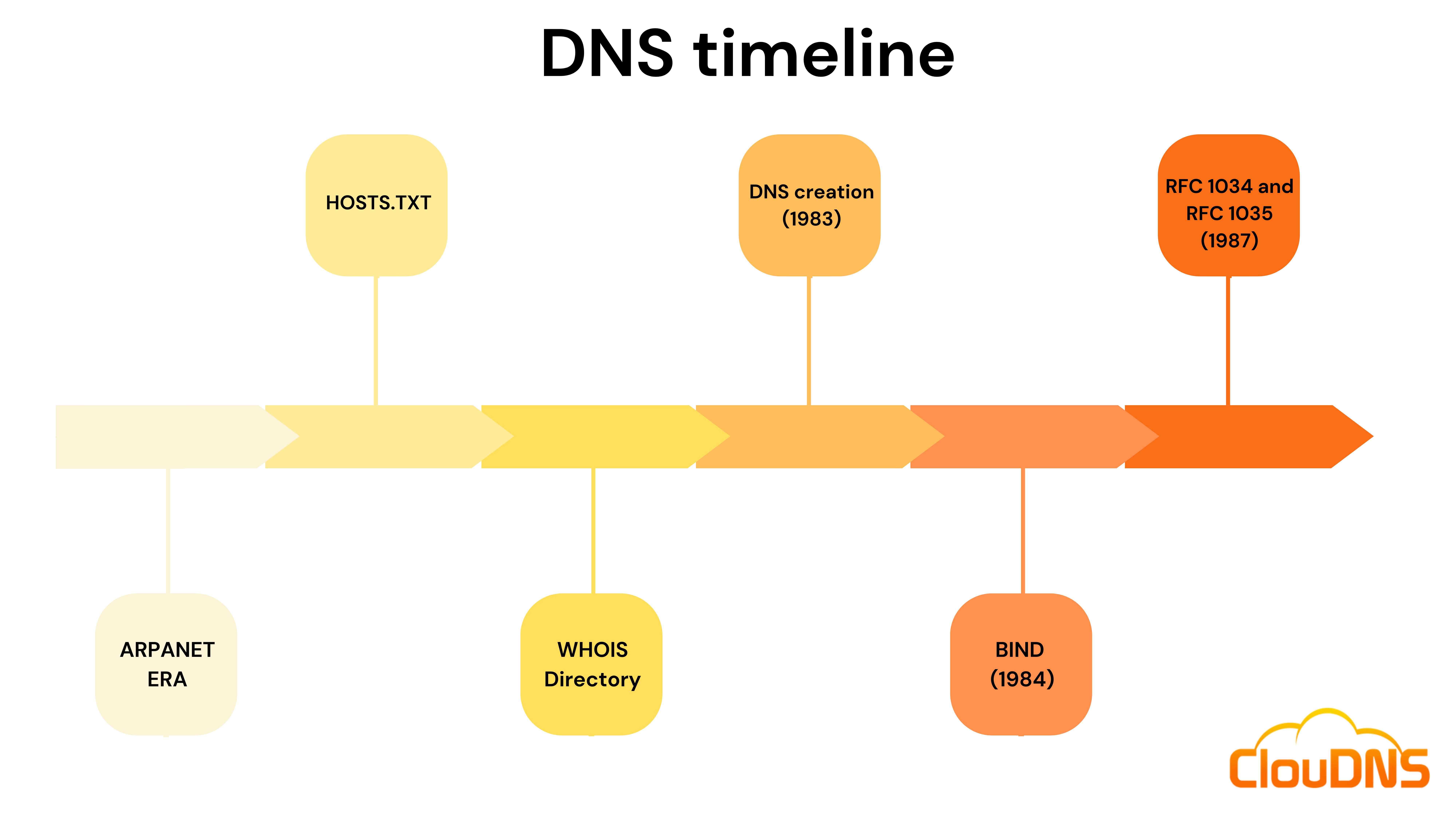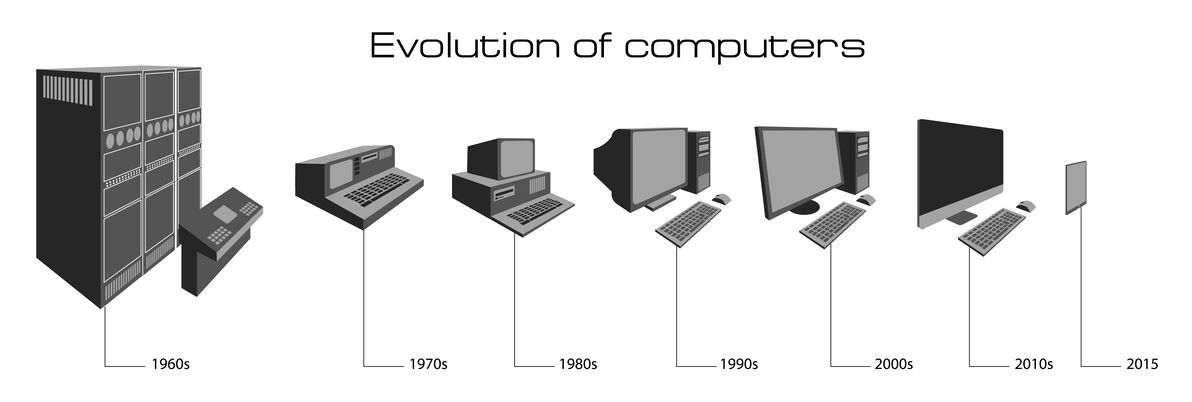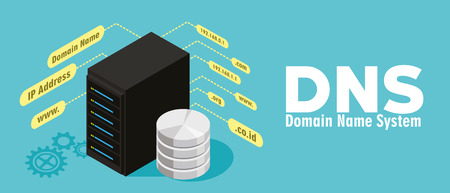We have talked a lot about DNS. How does it work, and all the related topic around it. But we have never spent some time about the DNS history. What led to the need for DNS? Who was the great person who invented it?
Table of Contents
Before the Internet and the DNS
Let’s get back to the time when the Internet didn’t exist. Yes, there was such a time, even if you don’t remember it. The Cold War was on, the USA was investing a lot in defense and technology. In 1958, under the president Eisenhower, ARPA (Advanced Research Projects Agency) started. It was a big step for the American science and a response to the Soviet achievements (Sputnik 1, 1957).
In the 60s ARPA was getting stronger and bigger. It got more hardware, including the Q-32 computer. The idea of computer networking was starting to catch on.
MIT (Massachusetts Institute of Technology) was working close with ARPA, and there was some serious progress about creating a network. The idea of packet switching was presented, and there was a project to connect the Q-32 to the TX-2 computer (MIT’s computer) under the management of Larry Roberts. Later in 1966, the same guy published a paper on ARPANET – a packet switching network that uses TCP/IP protocol. It was like the Internet, but not scalable. It took some more years before it gets a reality.
During the 70s there was a fast growth in the numbers of computers in the world. There were different networks appearing and even some international projects too. There was a lot of development, and many different protocols and programs were created. The first commercial e-mail programs came in 1976.
A year later, the first 3-network system was introduced. Packet radio, ARPANET, and SATNET were working together!
The technological progress was going so fast, but people were starting to have a severe problem with bookkeeping. There was no one united network, but rather a system of networks. The need for a global solution was strong and here comes the DNS!

The DNS history start
Initially, the process of assigning addresses was manual. Computers and their associated hostnames and addresses were added to the HOSTS.TXT file by contacting the SRI Network Information Center (NIC) via telephone during business hours. As the network grew, Feinler introduced the WHOIS directory on a NIC server, allowing retrieval of information about resources and contacts.
The task of simplifying the networking was given to Paul Mockapetris. He and his team had the mission to create a friendlier for use network, where people wouldn’t need to remember the IP address of every computer. Before, there was a centralized HOSTS.TXT text that was mapping the current sites. But, thanks to the growing number of sites, the file was getting bigger too, and there was a strong need for a decentralized model.
Paul Mockapetris: “It was created to let people use names for anything. But we had to figure out how to organize the distribution of domain names and how to ensure the system could accommodate diversity without unnecessary restriction.”
The DNS was created in 1983 and became one of the original Internet Standards in 1986 (After the creation of the Internet Engineering Task Force IETF). In 1984, UC Berkeley students developed the first Unix name server implementation known as BIND (Berkeley Internet Name Domain). Over the years, various developers and organizations, including the Internet Systems Consortium (ISC), contributed to the maintenance and development of BIND. In November 1987, RFC 1034 and RFC 1035 replaced the original DNS specifications from 1983. They describe the whole protocol functionality and include data types that it can carry.
Ready for ultra-fast DNS service? Click to register and see the difference!Experience Industry-Leading DNS Speed with ClouDNS!
RFC 1034 and RFC 1035: Defining the DNS Protocol
The RFC 1034 and RFC 1035 hold immense significance in the world of DNS as they define the very foundations of the DNS protocol. RFC 1034, published in 1983 and titled “Domain Names – Concepts and Facilities,” provides a comprehensive overview of the DNS architecture and its key components. It lays out the fundamental concepts and operations of DNS, introducing terms such as domain names, name servers, and resource records. By establishing a standardized framework, RFC 1034 enables interoperability and consistency across the DNS infrastructure. It serves as a vital reference for implementing DNS systems and understanding the core principles that govern name resolution on the Internet.
Complementing RFC 1034, RFC 1035, published in 1986 and titled “Domain Names – Implementation and Specification,” delves deeper into the technical aspects of the DNS protocol. It provides detailed specifications for message formats, data types, and the structure of DNS packets. RFC 1035 outlines the specific operations and algorithms used in resolving domain names to IP addresses and vice versa. It also introduces caching mechanisms that improve DNS performance by reducing the need for repeated queries. These two documents together form the backbone of the DNS protocol, ensuring consistent behavior and facilitating seamless communication between DNS resolvers, name servers, and clients.
The significance of RFC 1034 and RFC 1035 extends beyond their technical specifications. They represent a collaborative effort of experts and enthusiasts who shaped the early Internet and established the groundwork for modern-day networking. These documents continue to serve as a vital resource for developers, network administrators, and researchers, ensuring the integrity and interoperability of the DNS ecosystem.
DNS Nowadays
The DNS has seen various upgrades during its life. The first major one was the introduction of the NOTIFY mechanisms and Incremental Zone Transfer IXFR. Now the servers were able to update dynamically. With the NOTIFY, the master server can “say” to the slave servers that it has an update that it must share. Before, the slaves needed to check periodically. And the second IXFR, now those slaves servers, didn’t need to update the whole zone file, they could update just the changes.
Today, DNS operates on a hierarchical and decentralized structure. The DNS system consists of multiple interconnected servers that collectively store and manage DNS records. These servers are categorized into different types, including root servers, top-level domain (TLD) servers, and authoritative name servers. When a user enters a domain name in their web browser, their device initiates a DNS lookup process to find the corresponding IP address.
DNS has evolved over the years to meet the growing Internet demands. It has incorporated various enhancements, including security features like DNSSEC (Domain Name System Security Extensions), to protect against DNS poison attacks. Additionally, DNS-based technologies like DNS Load Balancing and Content Delivery Networks have been developed to optimize website performance and ensure high availability.
The Role of DNS in Internet Functionality
The Domain Name System (DNS) plays a pivotal role in the functionality of the internet. Without DNS, the modern internet as we know it would not be able to function efficiently. DNS serves as the “phone book” of the internet by translating human-readable domain names (like www.example.com) into machine-readable IP addresses (such as 127.0.0.1). This translation process is essential because, while humans prefer using descriptive names, computers and networking equipment need numerical IP addresses to route data.
Every time a user types a domain name in their browser or uses any internet service that requires online communication, the DNS ensures that the correct IP address is located. This allows for quick and efficient access to websites, emails, and online services, which depend on this translation. Essentially, DNS is responsible for making the internet accessible and user-friendly, ensuring that users can navigate vast amounts of information with ease.
The Future of DNS: Trends and Innovations to Watch Out For
As technology advances, prioritizing website speed and security stands out as the cornerstones of optimal DNS performance. As a result, companies are investing heavily in newer technologies to enhance user experience and ensure reliability.
The movements to switch to DNS over HTTPS are gaining momentum as it provides added protections to mitigate the threat of cybercrimes and preserves user privacy. Another emerging trend is DNS over TLS as companies seek to build trust and improve security. By adding an extra layer of protection, DoH and DoT make it more difficult for malicious actors to intercept or manipulate DNS queries, ensuring a safer and more reliable browsing experience for users. Additionally, DNS-based service discovery is also one to look out for, allowing IT teams to use DNS or DNS-related protocols to perform automated mapping or workloads.
Ultimately, the future of DNS depends on the ability of organizations to adopt these emerging trends and invest in the right DNS technologies to maximize user experience and data security.
Conclusion
The Domain Name System (DNS) has come a long way since its humble beginnings as a centralized text file, HOSTS.TXT, mapping out the ever-increasing number of sites on the web. Thanks to the advancements of Larry Roberts and Paul Mockapetris, the DNS was created to simplify the networking experience. Since then, we’ve seen various upgrades, such as the NOTIFY mechanisms and DNSSEC, to improve both performance and security. As the world of technology continues to evolve, the future of the DNS should remain at the forefront of our minds.







